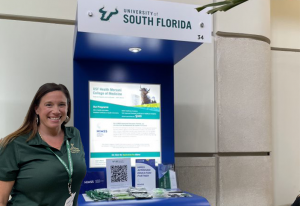The past year has been chock full of lessons and unexpected twists and turns for the future of healthcare and, in particular, health IT.
As we stand on the doorstep of the New Year, let’s look back at some of 2017’s most notable developments and events, and consider what they mean for the future.
Data Breaches Continue
Data breaches are increasingly common, so much so that the vast majority of them go unnoticed by the news media. In the third quarter of 2017 alone, the Department of Health and Human Services Office for Civil Rights reported 99 breaches of more than 500 healthcare records, meaning more than 1.7 million people saw their personal health information exposed or stolen, according to an article from HIPAA Journal.
The breaches have fueled public concern over the security of health information.
For the year, there had been 272 healthcare data breaches reported heading into October, but of all the malicious activity claiming health records in 2017, no event caught the public’s attention like WannaCry. However, unlike the other security breaches, this one showed little interest stealing health records, but rather, holding them for ransom.
The attack took place in May and saw Britain’s National Health Service taken offline by ransomware, software that locks a computer’s operating systems until a ransom is paid. In the 24 hours that followed, a kill switch for the ransomware had been found, slowing the spread of the attack. While it appears no records were stolen, hospitals in the UK were thrown into a state of chaos, unable to access patient records and being forced to cancel appointments and procedures such as surgeries.
A month later, U.S. healthcare companies were being warned by HHS that there were ongoing impacts for the U.S. healthcare sector, including two multi-state hospital systems in the U.S. that faced operational difficulties due to WannaCry malware.
While damage for the healthcare sector wasn’t as bad as it could have been, it highlighted a number of vulnerabilities the sector had in legacy IT systems.
Health Technology
The digitization of health information and implementation of Big Data into healthcare strategies has lead to a boom in new healthcare tech.
From artificial intelligence playing a greater role in diagnosis to the potential uses of blockchain technology and new analytics platforms that could help ease issues surrounding interoperability, 2017 is a year where the excitement around healthcare technology has grown significantly.
Developments in telehealth and wearable technology may also yield exciting new treatment methods, data-driven decision making and benefits that will have lasting impacts on patient engagement.
Opioid Crisis
The ongoing opioid crisis in the United States continues to be a hot topic, as the medical community searches for solutions to an epidemic that claimed more lives in 2016 than the Vietnam War, according to CBS News.
The Centers for Disease Control and Prevention this year awarded $28.6 million to 44 states and Washington DC to support efforts to curb the opioid epidemic. The CDC offers support to states through three separate initiatives: Prescription Drug Overdose: Prevention for States (PfS), Data Driven Prevention Initiative (DDPI) and Enhanced State Opioid Overdose Surveillance (ESOOS).
Supporting these programs involves the development and improvement of prescription drug monitoring programs, increasing the effectiveness of opioid awareness messaging and conducting overdose fatality reviews.
Natural Disasters
From hurricanes to earthquakes to wild fires, 2017 saw its fair share of natural disasters. Healthcare systems as a result were severely strained at times, though health IT efforts in recent years have helped mitigate some issues.
The hurricane season hit close to home for USF. Following the impact of Hurricane Irma in Florida, USF sent doctors to Puerto Rico to aide in the recovery from Hurricane Maria.
Taking 500 pounds of medical supplies with them and treating patients in rural areas, USF doctors have been able to make an impact at a time when the island is vulnerable due to a lack of electricity and running water, particularly with patients suffering chronic ailments such as high blood pressure and diabetes.
USF Health continues to match public donations to raise funds that will send doctors and medical supplies to the island.
USF Med School Breaks Ground
While it may not be national healthcare news, we think it’s kind of a big deal that 2017 saw construction begin on the new USF Health Morsani College of Medicine and Heart Institute in downtown Tampa.
The new college will be within walking distance of the Center for Advanced Medical Learning and Simulation and much closer to USF Health’s primary teaching facility, Tampa General Hospital. The new facility is a reflection of the growth USF Health has experienced in recent years and has helped USF become the most selective medical school in the state of Florida.



